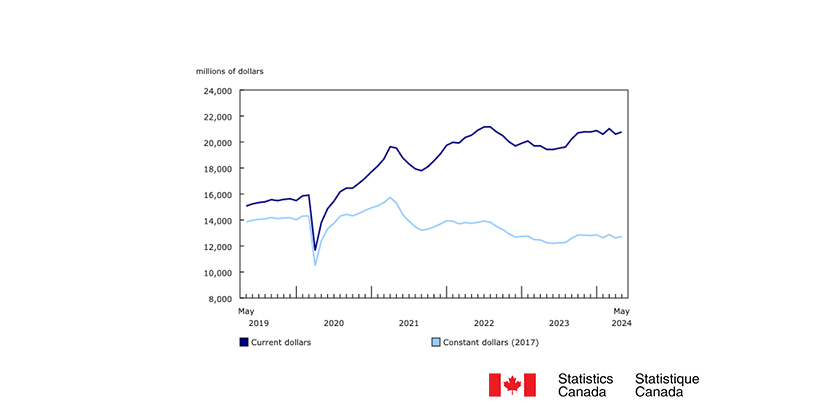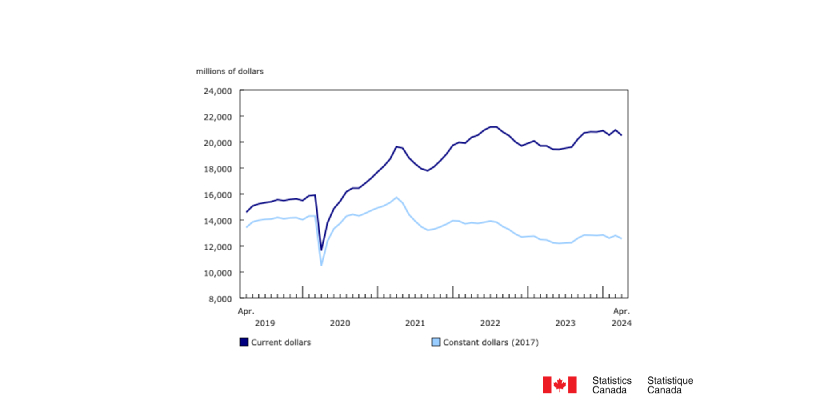CSA Z462 Workplace Electrical Safety Standard, 2021 Edition: Changes and Updates

Jan 18, 2021
By Terry Becker
Changes in the CSA Z462 Workplace electrical safety standard are slowing down. Good news! The 2021 edition will see significant reorganization of content in Clause 4.1, changes to existing annexes, some new annexes and a significant change to the arc flash PPE category method of determining “additional protective measures” for a work task’s arc flash risk assessment are included in the 2021 edition. CSA Z462 2021 edition will not be 100% technically harmonized with the 2021 edition of NFPA 70E.
The following information is provided for the benefit of the reader in understanding the CSA Z462 Workplace electrical safety standard and the updates/changes anticipated to the 2021 edition, and in order to update an employer’s established electrical safety program. A completed electrical safety program internal electrical safety audit would identify the need to update the electrical safety program whenever a new edition of CSA Z462 publishes.
The information provided in this article is the technical interpretation of the author and is not an official interpretation from CSA Group. The author assumes no liability for the information presented and the reader is advised to contact CSA Group after the 2021 edition publishes for any official interpretation. The information presented is based on the public review draft of CSA Z462 2021 edition. It is also noted this article doesn’t include all changes or the specific changes that are anticipated to be published.
CSA Group will publish the fifth edition of CSA Z462 Workplace electrical safety standard in January 2021. Since its inception in 2006 following CSA and NFPA executing a memorandum of understanding (MOU) to harmonize standards for North America, CSA Z462 has had a positive impact on electrical safety and the identification and effective management of arc flash and shock hazards. Lives have been saved!
The first edition was published in January 2009. Over the first four editions, a significant evolution of the standard has occurred. CSA Z462 moved from focusing on hazard identification and PPE selection to a more mature standard aligned with occupational health and safety management system standards (e.g. CSA Z45001, ISO 45001) to include a mandatory risk assessment procedure. CSA Z462 in the 2018 edition is 100% work task risk assessment based, including two unique risk assessments completed under the overall job’s risk assessment: shock risk assessment and arc flash risk assessment.
Technical harmonization of the core clauses and articles for the most part between CSA Z462 and NFPA 70E has been maintained in the first four editions. CSA Z462 includes additional annexes that were not adopted into NFPA 70E, we will see that again in the 2021 edition of CSA Z462. In the 2021 edition of CSA Z462 additional changes will be included of a technical nature related to the arc flash PPE category method that will not be published in NFPA 70E. NFPA 70E 2012 edition will include a significant new Article 360 Safety-Related Requirements for Capacitors and associated Annex R Working with Capacitors that is NOT included in the CSA Z462 2021 edition.
It is noted that the CSA Z462 2021 edition public review draft closed July 29, 2020. You are encouraged in future revision cycles to submit public comments and influence the direction of the CSA Z462 standard. The CSA Z462 Technical Committee met on October 27, 2020 to review and approve any final amendments to the draft and a final vote occurred to the draft. The 2021 edition of CSA Z462 as noted above should be published in late January 2021.
With respect to the changes as documented in the public review draft, the following changes are anticipated to be published. Not all changes are potentially included in this article.
Clause 3: definitions
The following definitions have been altered, or updated: Accessible, Balaclava (sock hood), Barrier, Equipment, Arc-Resistant, Fault Current, Available (Note), Receptacle, Shock Hazard, Voltage Nominal (Note on float voltage for DC to change the threshold for arcing fault to 60VDC from 30VDC), and Work On (Notes).
The following definitions are deleted: Branch-Circuit Overcurrent Device, Switchgear, Arc-Resistant.
The following new definitions are added: Normal Operation, Policy, Procedure, Process, and Program.
Clause 4: safety-related work practices
A substantial reorganization of content from Clause 4.1 and Clause 4.3 is anticipated to occur. This is a positive change to further clarify the framework/contents of an employer’s electrical safety program and the elements that need to be considered when completing a work task’s risk assessment procedure. Content may be deleted altogether, updated or relocated between clauses. Significant clause number changes will occur with this realignment of content.
Clause 4.1 will now identify that an employer shall create and document an “Electrical Safety Policy” that affirms the organization’s commitment to identify electrical hazards, eliminate exposure or assessment and control risks, and as a priority establish an electrically safe work condition. This policy should be documented in the employer’s electrical safety program. Clause 4.1 will now include a new clause with a general requirement that an electrically safe work condition shall be established as identified in Clause 4.2. Practices as identified in CSA Z462 Clause 4.1 and 4.3 shall be used if an electrically safe work condition cannot be established.
Justification statements for energized electrical work will be relocated from Clause 4.3 to Clause 4.1. With respect to the applicable voltage level that CSA Z462 applies to in the 2021 edition, 30VAC will be retained, but the threshold voltage for DC will be increased to 60VDC.
Reference will now be made to CSA Z45001 instead of CSA Z1000 as CSA Group adopted ISO 45001 with respect to occupational health and safety management systems. Annex A in turn has been completely updated with respect to the comparison table of how CSA Z462 aligns with the requirements of CSA Z45001.
Some updated content will be added to the risk assessment procedure clause, and specifically Clause 4.3.2.2.4 Normal operating condition will be relocated to Clause 4.1 under risk assessment procedure. This is an appropriate update as the requirements of a normal operating condition relate directly to risk assessment (e.g. likelihood of occurrence) and are not related to justification for energized electrical work.
Additionally in Clause 4.1.6.9 from the 2018 edition (this clause will be renumbered), new Annex I content will be added providing an example of a job safety planning checklist. Updated Clause 4.1 content will be included for “Lockout program and procedures.”
A significant change in the 2021 edition related to type of training will see the addition of language in the Notes for the existing Clause 4.1.7.1.5 that now recognizes that “classroom training can include interactive electronic or interactive web-based training.”
Some additional content is anticipated to be included in existing Clause 4.1.10 Portable (cord-and-plug-connected) electrical equipment related to maintenance, handling and storage.
In Clause 4.2 the two changes are anticipated to the existing Clause 4.2.5 Process for establishing and verifying an electrically safe work condition and Clause 4.2.6 Temporary protective grounding equipment. With respect to Clause 4.2.5 a note may be added with respect to where a shared neutral conductor may still carry current. Some wording changes are anticipated related to wording for a “permanently mounted absence of voltage tester.” A specific reference to UL 1436, Outlet Circuit Testers and Other Similar Indicating Devices is added. With respect to Clause 4.2.6 Temporary protective grounding equipment, expanded content may be added with respect to testing and inspection, and a new Annex T will be added with extensive additional information.
In Clause 4.3 as noted above significant content is relocated to Clause 4.1, which does enhance the flow of content. In Clause 4.3 some additional content modifications are included with respect describing the “estimate of likelihood and severity” for a work task’s shock risk assessment. CSA Z462 Table 2 Estimate of the likelihood of occurrence of an arc flash incident for ac and dc systems may see the deletion of the work task “For dc systems, insertion or removal of individual cells or multi-cell units of a battery system in an open rack,” which was a repeated work task. A new work task may be added: “Operation of a CB or switch that is not in a normal equipment condition,” for any equipment condition (the wording of this task will most likely change). An anticipated wording change to the “Removal or battery conductive intercell connector covers” to “Insertion or removal of connector covers or battery intercell connector(s).” The arc resistant switchgear work task description will be updated.
Some minor updates to Table 3 with respect to addition of “high visibility apparel” and clarifying in notes that outer wear arc-rated clothing worn over selected arc-rated PPE is not considered as part of the required ATPV for the anticipated incident energy exposure.
In Clause 4.3.7.3 Personal protective equipment, new content is added to the note providing risk control method options to consider when the incident energy exceeds the ATPV of available arc flash PPE to manage risk.
In Clause 4.3.7.3.7 Hand and arm protection, a new Table 4A Maximum use voltage for rubber insulating gloves is added to identify class number and maximum ac and dc use voltages. This table is taken from ASTM F496 Standard Specification for In-Service Care of Insulating Gloves and Sleeves, Table 1 Voltage Requirements.
The most significant anticipated change in CSA Z462 2021 edition relates to Clause 4.3.7.3.15 Arc Flash PPE category method. The existing Table 6A electrical equipment parameters were used with the new IEEE 1584 2018 edition formulas, and a new arc flash PPE category 5, minimum 75 cal/cm2 will be added for 600V class switchgear. As well, the arc resistant electrical equipment rows will clarify that the arc flash PPE category is N/A when doors are closed and secured and the available fault current does not exceed the arc-resistant rating of the electrical equipment.
A new alternate table to Table 6A, Table V.1 is also added in a new Annex V Arc flash PPE categories that will be a normative annex. The existing Table 6A Arc-flash PPE categories for alternating current (ac) systems has not been deleted and either Table 6A or Table V.1 can be used. Included in the new Annex V is Figure V.1, Table V.1 Arc flash PPE categories selection flow chart, which is provided as a guide to the use of the alternate Table V.1. Table V.1 and was added in an effort to simplify the information gathering required to use the arc flash PPE category method. Of significance this new Table V.1 includes electrical equipment that is “240VAC single phase,” indicating an arcing fault probability is sustainable for 240VAC single phase electrical equipment. Official clarification can be requested from CSA Group when the 2021 edition of CSA Z462 is published with respect to the addition of 240VAC single phase electrical equipment as capable of sustaining an abnormal arcing fault condition. Table 6C Personal protective equipment (PPE) is updated to include arc flash PPE category 5, minimum 75 cal/cm2.
Clause 5: safety-related maintenance requirements
A general rewrite of Clause 5 is anticipated. A lot of the existing content is retained but will be moved, and the clause numbering is completely updated. A new clause is added with respect to the owner of the electrical equipment establishing, implementing and maintaining a documented maintenance program for electrical equipment and references the CSA Z463 Maintenance of electrical equipment standard. The updates, revisions and additions to Clause 5 improve its readability and the interpretation of the information presented.
Annexes
In the CSA Z462 2021 edition several existing annexes are updated and we anticipate the provision of several new annexes to provide additional explanatory and supplemental information to reference with respect to the core clause content of CSA Z462.
Annex A will be updated referencing CSA Z45001 and a new cross reference table provided specific to CSA Z462 and the CSA Z45001 occupational health and safety management system intent or objective.
Annex D: the existing IEEE 1584 2002 edition content is deleted and a reference only (no detailed formulas content from IEEE 1584 will be included) to the new updated IEEE 1584 2018 edition added.
Annex I Sample job briefing and planning checklist: a new Figure I.2 Sample job planning checklist is added.
Annex J Sample energized electrical work permit Figure J.2 Energized electrical work permit flow chart will be amended to update the applicability of the permit for 30VAC or now 60VDC.
Annex K General categories of electrical hazards: a complete rewrite related to arc blast is now included indicating that arc blast pressure is not as significant as it has been presented in the past. Note I have quoted that 40 cal/cm2 of incident energy is not a stop point for energized work, which has been a true statement for over 10 years. This updated published information in Annex K will now provide additional substantiation for this. Energized work tasks can be performed up to 140 cal/cm2 of incident energy, as an arc flash suit is available from Oberon Company with an ATPV of 140 cal/cm2.
Annex O Safety-related design has been significantly updated with changes, and editions.
Annex P [NEW] Electrical switching and isolation is added to provide general information for low or high voltage complex switching and isolation, including a new Figure P.2 Example Switching Order form.
Annex Q Arc flash and shock warning equipment labels includes minor wording updates, and updated example equipment labels to correct the orange colour used to properly align with ANSI Z535. A specific note is now included that states electrical hazard information for supervised industrial installations can be provided in alternative methods other that the application of equipment labels.
Annex T [NEW] Temporary Protective Grounding is added provide additional application information further than the content of CSA Z462, Clause 4.2.6.
In closing, the CSA Z462 Workplace electrical safety standard has made a significantly positive impact in Canada since 2009 to worker safety related to energized electrical work. Many employers are referencing CSA Z462 when developing their electrical safety programs and in determining the hierarchy of risk control methods to apply to work tasks to eliminate exposure to arc flash and shock for qualified electrical workers and task qualified workers or to reduce risk to as low as reasonably practicable.
As above, this article is not an official interpretation from CSA Group and is based on the publicly released public review draft and the interpretation of the author of this article. You are advised to contact CSA Group when CSA Z462 2021 edition is published in late January 2021 for any official interpretation.
If you would like to discuss this article and the information presented please contact me: terry.becker@twbesc.ca or 1-587-433-3777.
[IT]Terry Becker, P.Eng., CESCP, IEEE Senior Member is the first past Vice-Chair of the CSA Z462 Workplace electrical safety Standard Technical Committee and currently a voting member and working group leader for Clause 4.1 and the Annexes. Terry is also a voting member on the CSA Z463 Maintenance of electrical systems Standard and a voting member of the IEEE 1584 Guide for Performing Arc-Flash Hazard Calculations. Terry has presented at conferences and workshops on electrical safety in Canada, the USA, India, and Australia. Terry is a Professional Engineer in AB, BC, SK, MN and ON. Terry is an Electrical Safety Specialist, Management Consultant at TW Becker Electrical Safety Consulting Inc. and can be reached at 1-587-433-3777 or by email: terry.becker@twbesc.ca.















